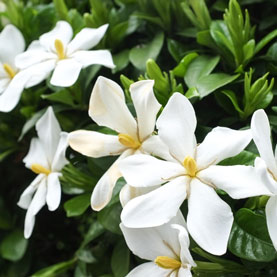
Plan Your Planting: What Not To Grow Side-By-Side
Feb 06th 2019
The best pairs in life complement one another — this is true both for humans and plants. While humans are typically able to find common ground with even the most unlikely friends, the same cannot be said for certain species of plants in Florida. Green-thumb experts know that incompatible plants should never be grown side-by-side, as a poor pairing can lead to a failed landscape. But if plant species identification isn’t your forte, that’s OK — the best way to ensure a lush and vibrant landscape or garden is with the help of a professional Gainesville landscaping company. At Evergreen Lawn Care, we strive to keep the landscaping our customers enjoy healthy and vibrant for many years. Contact us today to schedule landscaping services for your home, garden or property.
Benefits Of Planning A Garden Or Landscape
To reap the rewards of any garden or landscape, it’s important to plan for the end result even before your hands touch the soil. The final product depends on your imagination, but many home and business owners skip a step or two along the way. Don’t let your eagerness to enjoy beautiful landscaping in Gainesville, FL, ultimately overshadow the end benefits, such as:
- Reduced soil erosion;
- Lowered heating and cooling costs;
- Less electricity usage; and
- Increased property value.
A great way to benefit from your landscaping vision is by working with the professional landscapers in Gainesville with Evergreen Lawn Care. Our team listens to you and creates a planned landscape that fits your budget and avoids common landscaping issues.
Avoid These Common Landscape Faux Pas
Sweet Corn & Tomatoes
While the two are delicious when served together, when planted side-by-side, one of these plants typically triumphs over the other by absorbing the nutrients required for the other plant to adequately grow. In other cases, growing sweet corn and tomatoes together can result in malnutrition to both plants. The resulting crops are usually smaller than normal and lack flavor and nutritional value. Instead, plant sweet corn next to green beans and the tomatoes either alone or next to cabbage.
Plants With Differing Heights
Bushes are notorious for overshadowing one another with one variety always coming up short — literally. Though height differences in any Gainesville landscaping can create depth and dimension, it’s only worth the effort when all plants involved are able to thrive. If your landscape will have more than one type of bush or shrub, or a combination of different shrubs or bushes planted close together, double check the expected height of each. When in doubt, either separate the plants or change the shorter one out for a different plant to ensure the health and longevity of every plant in your garden or landscape.
Shade Trees & Turfgrass
Various types of turfgrass are popular groundcover for Florida homes and businesses that are under the watch of various shade trees. But even though you may enjoy the shade, turfgrass rarely does. Because the shade tree has such an extensive root system, it draws in large quantities of nutrients and water, leaving the turfgrass without adequate nutrition. These grasses have higher nutritional needs due to their leafy nature and require consistent grooming with lawnmowers.
Gardenias
While this doesn’t solely apply to gardenias, these opulent flowering bushes are a good example of what can happen by planting too much of a good thing. Gardenias can develop a variety of diseases that decimate an individual bush along with other nearby gardenias. Sooty mold, nematodes, powdery mildew, and root-rot are common issues with gardenias but can also spread to other plants in the landscape. To avoid this, follow the rule of thumb that there can be too much of a good thing and exercise caution when planting multiples of the same variety of plant together.
